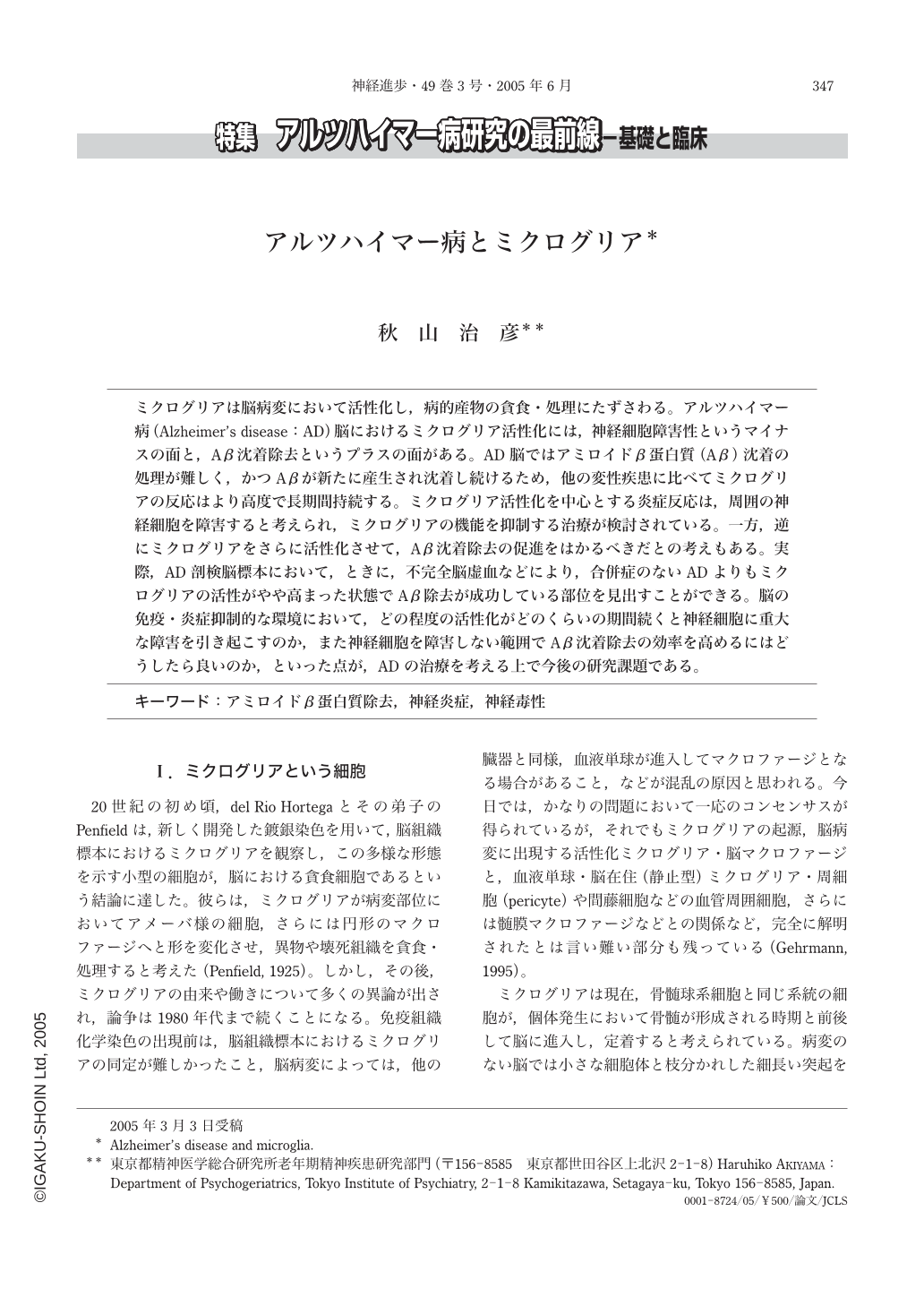Japanese
English
- 有料閲覧
- Abstract 文献概要
- 1ページ目 Look Inside
ミクログリアは脳病変において活性化し,病的産物の貪食・処理にたずさわる。アルツハイマー病(Alzheimer's disease:AD)脳におけるミクログリア活性化には,神経細胞障害性というマイナスの面と,Aβ沈着除去というプラスの面がある。AD脳ではアミロイドβ蛋白質(Aβ)沈着の処理が難しく,かつAβが新たに産生され沈着し続けるため,他の変性疾患に比べてミクログリアの反応はより高度で長期間持続する。ミクログリア活性化を中心とする炎症反応は,周囲の神経細胞を障害すると考えられ,ミクログリアの機能を抑制する治療が検討されている。一方,逆にミクログリアをさらに活性化させて,Aβ沈着除去の促進をはかるべきだとの考えもある。実際,AD剖検脳標本において,ときに,不完全脳虚血などにより,合併症のないADよりもミクログリアの活性がやや高まった状態でAβ除去が成功している部位を見出すことができる。脳の免疫・炎症抑制的な環境において,どの程度の活性化がどのくらいの期間続くと神経細胞に重大な障害を引き起こすのか,また神経細胞を障害しない範囲でAβ沈着除去の効率を高めるにはどうしたら良いのか,といった点が,ADの治療を考える上で今後の研究課題である。
Lesions of Alzheimer disease(AD) are associated with low-grade but sustained inflammatory responses. Activated microglia play a major role for the neuroinflammation in AD. Upon activation, microglia are known to secrete a wide variety of molecules involved in inflammation, many of which are potentially neurotoxic. Activated microglia could be targets of anti-inflammatory therapy of AD. However, evidence also indicates that microglia eliminate Aβ from the brain. Aβ is produced continuously in both the normal and the AD brain. Under normal conditions, Aβ is removed successfully before it accumulates as extracellular amyloid fibrils. Even in AD, a large portion of Aβ may be cleared from the brain with a small portion being left and deposited as neurotoxic senile plaques. Both in vivo and in vitro studies have shown the effective uptake of soluble Aβ by microglia. Microglia seem to be involved, without significant activation, in the removal of Aβ before it is deposited extracellularly. Aβ, once deposited as insoluble fibrils, is also removed by microglia. In the AD cerebral cortex complicated with recent infarction, activated microglia and monocyte-derived macrophages remove the necrotic tissue debris. Phogocytic removal of Aβ by microglia is also upregulated in areas with incomplete ischemia where neuropil is preserved and neurons survive. In some cases, such upregulation of microglial activity appears to result in the complete clearance of Aβ from the neuropil. Activated microglia agglomerated in senile plaques phagocytose the Aβ deposits. In AD without complication, however, the elimination is at best partial. Further activation of microglia may be beneficial to Aβ removal but can also be hazardous to neurons. Appropriate regulation of microglial activity could be a promising strategy to develop effective therapy of AD.

Copyright © 2005, Igaku-Shoin Ltd. All rights reserved.


